Background
Vodafone wanted a contender to take on America’s Cup-winner Jimmy Spithill on the Team Vodafone trimaran. The catch to this fantastic activation (conceived by creative agency True) was that the challenger would remote control the boat’s rudder whilst dangling from a helicopter, as crew followed with rigging and sails below.

Our response was a digital campaign featuring unique mobile game technology and world first media innovation driven, appropriately, by the power of the wind.
Innovation from Nature
To select our challenger, we launched a virtual sail boat – a mobile sailing game featuring real world wind conditions and an innovative mobile media campaign driven automatically by the wind.
Taking on infamous Captain Jimmy Spithill is no small undertaking, so the digital campaign needed both to promote the activation and test the player's ability to handle a virtual yacht from a mobile device. To meet these goals, we designed a game based on simplified but accurate rules of sailing, pitting amateur sailors nationwide against one another for a spot on the high-score board.
To spread the word we launched a targeted, programmatic mobile media campaign, delivering dynamic creative messages appropriate to the market and tailored to the moment.
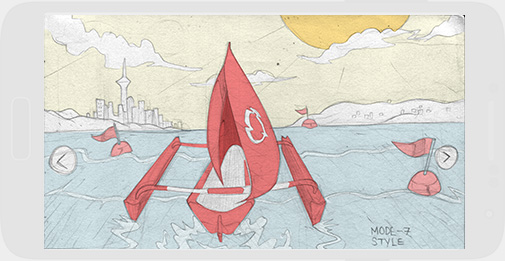
44,107
virtual boat races

Virtual Sailing, Real Wind
By accessing live wind conditions from an open source weather feed, we matched wind speed in the game to real-time conditions on Auckland’s Manukau Harbour. When wind was high in Auckland, sailing was good both on the water and in the game.
Average wind speed was a respectable 5 knots, but a high of 14.4 knots at 10pm on October 30th resulted in some of the quickest sailing.
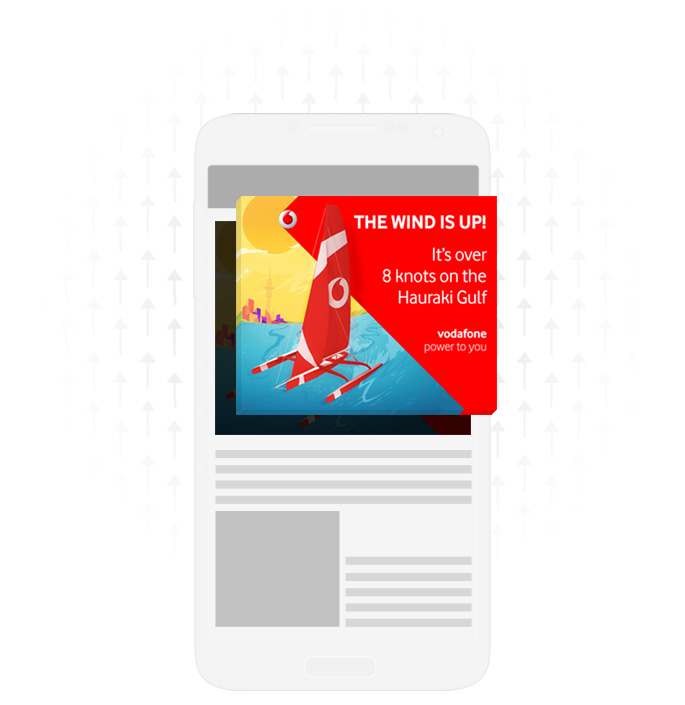
Wind Powered Mobile Media
More wind on the water meant more ads on mobile and more racers in the game.
To promote the competition, we developed a media platform that linked mobile ads to live wind conditions. Integrated with Google’s Mobile Display Network, the platform checked live wind every hour, and automatically placed more ads when wind speeds meant faster virtual sailing and a better chance at a high score. Our digital media team designed a targeted programmatic media plan, placing dynamic ads across numerous related mobile sites and apps.
Dynamic, wind-powered media was 27% more effective than standard mobile ads
2,527
hours branded gameplay
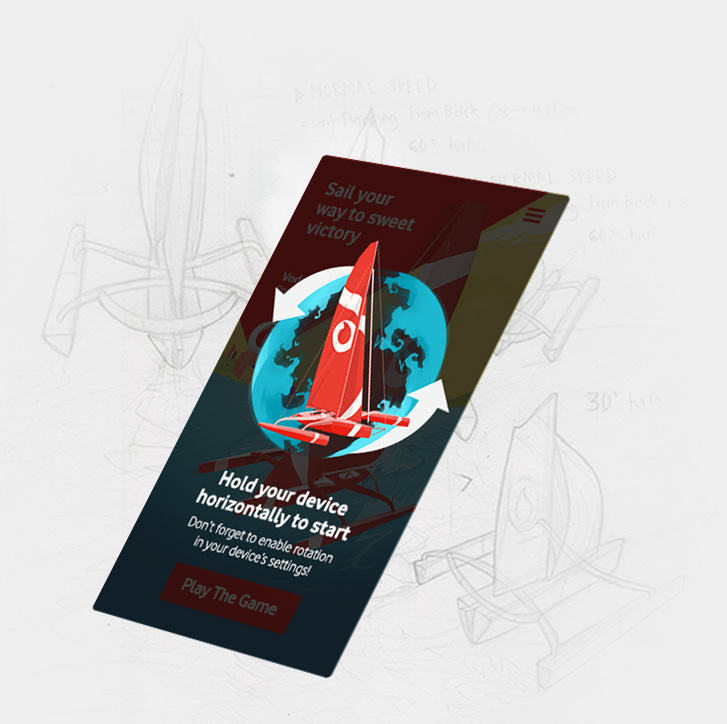
Boat and Game Design
A 3D model of the Team Vodafone trimaran was designed and animated, rendered as 2D sprites, and textured to match the illustrative game style. These animations were controlled in the mobile browser-based game engine to give the impression of 3D tilting, tacking and speed.
Educating amateur sailors on the subtleties of sail mechanics was perhaps our biggest UX design challenge (few non-sailors expect a cross wind to generate more boat speed than a tail wind). Numerous design iterations and many, many hours of user testing led to a simplified wind and boat speed display that taught the basic principles of sailing without compromising the accuracy of the experience.
For a casual mobile game demanding around 2 minutes of focused attention, the fact that 62% of all races crossed the finish line is a great result and a testament to attention to detail from the design and UX team.

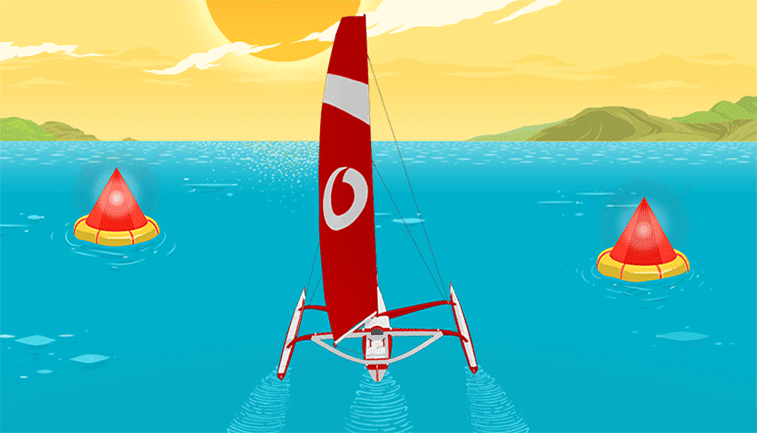
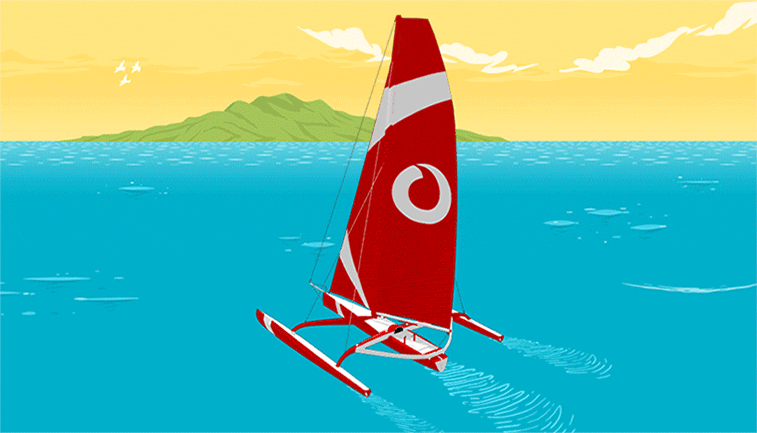
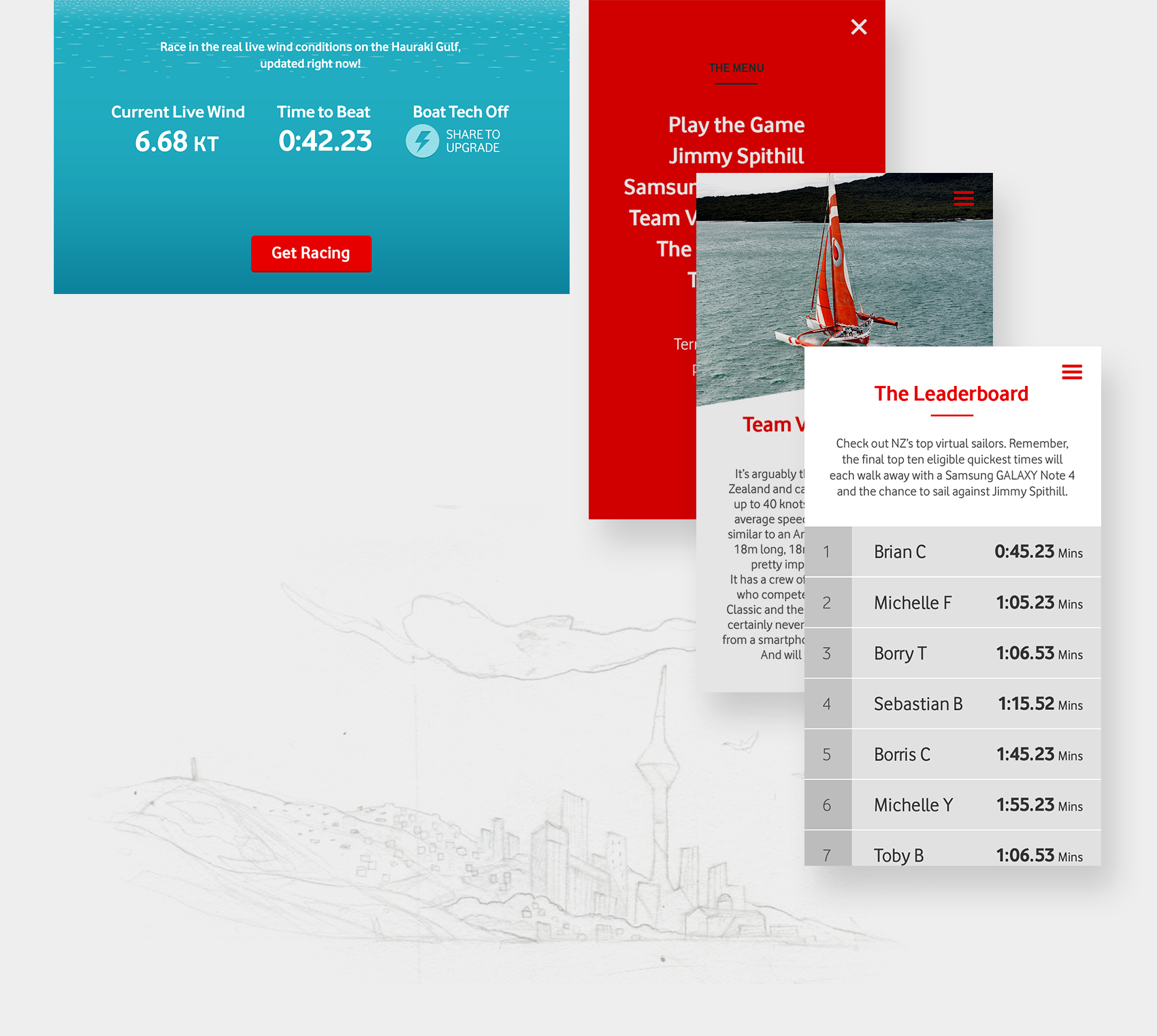
Sharing High Scores
People share what they love. To encourage sharing, we incentivised players with virtual “boat tech” that made their craft handle slightly better and race slightly faster. This motivation to share, along with the bragging rights earned when players raced a high score, meant that by the close of the campaign social media had accounted for almost 10% of site visits. What’s more, the interest and variability of dynamic wind conditions made great conversation for Vodafone New Zealand's social media channels.